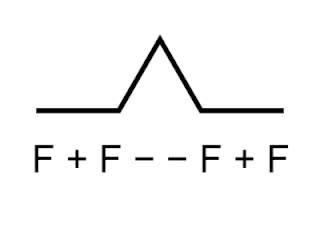
Logo is an educational programming language, designed in 1967 by Wally Feurzeig, Seymour Papert, and Cynthia Solomon. Logo is not an acronym: the name was coined by Feurzeig while he was at Bolt, Beranek and Newman, and derives from the Greek logos, meaning word or thought.

Seymour Aubrey Papert was a South African-born American mathematician, computer scientist, and educator, who spent most of his career teaching and researching at MIT. He was one of the pioneers of artificial intelligence, and of the constructionist movement in education. He was co-inventor, with Wally Feurzeig and Cynthia Solomon, of the Logo programming language.
In computer graphics, turtle graphics are vector graphics using a relative cursor upon a Cartesian plane. Turtle graphics is a key feature of the Logo programming language.

Lego Mindstorms is a hardware and software structure which develops programmable robots based on Lego building blocks. Each version includes computer Lego bricks, a set of modular sensors and motors, and Lego parts from the Technic line to create the mechanical systems. The system is controlled by the Lego bricks.

The MIT Media Lab is a research laboratory at the Massachusetts Institute of Technology, growing out of MIT's Architecture Machine Group in the School of Architecture. Its research does not restrict to fixed academic disciplines, but draws from technology, media, science, art, and design. As of 2014, Media Lab's research groups include neurobiology, biologically inspired fabrication, socially engaging robots, emotive computing, bionics, and hyperinstruments.
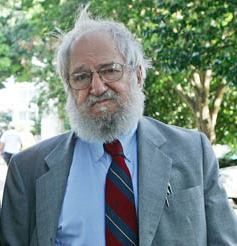
Constructionist learning is the creation by learners of mental models to understand the world around them. Constructionism advocates student-centered, discovery learning where students use what they already know, to acquire more knowledge. Students learn through participation in project-based learning where they make connections between different ideas and areas of knowledge facilitated by the teacher through coaching rather than using lectures or step-by-step guidance. Further, constructionism holds that learning can happen most effectively when people are active in making tangible objects in the real world. In this sense, constructionism is connected with experiential learning and builds on Jean Piaget's epistemological theory of constructivism.

Mitchel Resnick is Lego Papert Professor of Learning Research, Director of the Okawa Center, and Director of the Lifelong Kindergarten group at the Massachusetts Institute of Technology (MIT) Media Lab. As of 2019, Resnick serves as head of the Media Arts and Sciences academic program, which program grants master's degrees and Ph.D.s at the MIT Media Lab.

Idit R. Harel is an Israeli-American entrepreneur and CEO of Globaloria. She is a learning sciences researcher and pioneer of Constructionist learning-based EdTech interventions.
MicroWorlds is a program that uses the Logo programming language to teach language, mathematics, programing, and robotics concepts in primary and secondary education. It features an object in the shape of a turtle that can be given commands to move around the screen drawing shapes, creating animations, and playing games. The program's use of Logo is part of a large set of dialects and implementations created by Seymour Papert aimed at triggering the development of abstract ideas by children through experimentation. MicroWorlds is developed by Logo Computer Systems Inc. (LCSI) and released for Windows and Mac computers.
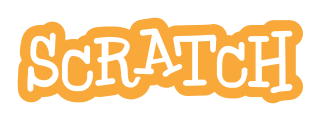
Scratch is a high-level block-based visual programming language and website aimed primarily at children as an educational tool for programming, with a target audience of ages 8 to 16. Users on the site, called Scratchers, can create projects on the website using a block-like interface. Projects can be exported to HTML5, JavaScript, Android apps and EXE files using external tools. The service is developed by the MIT Media Lab, has been translated into 70+ languages, and is used in most parts of the world. Scratch is taught and used in after-school centers, schools, and colleges, as well as other public knowledge institutions. As of May 8, 2022, community statistics on the language's official website show more than 104 million projects shared by over 90 million users, over 686 million total projects ever created, and more than 100 million monthly website visits.

MIT App Inventor is a web application integrated development environment originally provided by Google, and now maintained by the Massachusetts Institute of Technology (MIT). It allows newcomers to computer programming to create application software (apps) for two operating systems (OS): Android, and iOS, which, as of 8 July 2019, is in final beta testing. It is free and open-source software released under dual licensing: a Creative Commons Attribution ShareAlike 3.0 Unported license, and an Apache License 2.0 for the source code.
Yasmin B. Kafai, Ph.D., is a Professor of Learning Sciences at the University of Pennsylvania Graduate School of Education, past president of the International Society of the Learning Sciences (ISLS), and an executive editor of the Journal of the Learning Sciences.
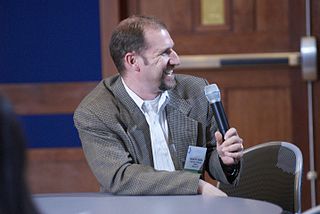
David Williamson Shaffer is the Vilas Distinguished Achievement Professor of Learning Science at the University of Wisconsin–Madison in the department of Educational Psychology, the Obel Foundation Professor of Learning Analytics at Aalborg University in Copenhagen, a Data Philosopher at the Wisconsin Center for Education Research, and Principal of EFGames, LLC.
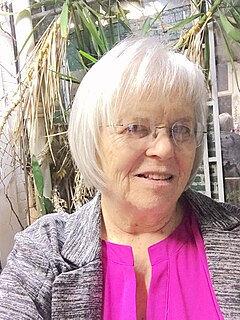
Cynthia Solomon is an American computer scientist known for her work in artificial intelligence (AI) and popularizing computer science for students. She is a pioneer in the fields of artificial intelligence, computer science, and educational computing. While working as a researcher at Massachusetts Institute of Technology (MIT), Dr. Solomon took it upon herself to understand and program in the programming language Lisp. As she began learning this language, she realized the need for a programming language that was more accessible and understandable for children. Throughout her research studies in education, Dr. Solomon worked full-time as a computer teacher in elementary and secondary schools. Her work has mainly focused on research on human-computer interaction and children as designers. While working at Bolt, Beranek and Newman, she worked with Wally Feurzeig and Seymour Papert, to create the first programming language for children, named Logo. The language was created to teach concepts of programming related to Lisp. Dr. Solomon has attained many accomplishments in her life such as being the vice president of R&D for Logo Computer Systems, Inc., when Apple Logo was developed and was the Director of the Atari Cambridge Research Laboratory. Dr. Solomon worked on the program committee of Constructing Modern Knowledge and the Marvin Minsky Institute for Artificial Intelligence in 2016. Further, she has published many writings based on research in the field of child education and technology in the classroom. Dr. Solomon has conducted workshops in elementary schools, high schools, and colleges regarding academic research and writing. She continues to contribute to the field by speaking at conferences and working with the One Laptop per Child Foundation.
Brian Silverman is a Canadian computer scientist, the creator of many programming environments for children, and a researcher in cellular automata.

UCBLogo, also termed Berkeley Logo, is a programming language, a dialect of Logo, which derived from Lisp. It is a dialect of Logo intended to being a “minimum Logo standard.” It has the best facilities for handling lists, files, input/output (I/O), and recursion. It can be used to teach most computer science concepts, as University of California, Berkeley lecturer Brian Harvey did in his Computer Science Logo Style trilogy. It is free and open-source software released under a GNU General Public License (GPL).
Darunsikkhalai School for Innovative Learning is a bilingual school located in King Mongkut's University of Technology Thonburi. DSIL is Thailand’s first school that follows the Constructionism Theory as the school curriculum. DSIL was founded in 1997 and has a variety of connections to educational institutions, such as Stanford University, Massachusetts Institute of Technology (MIT), etc. to keep the school innovative and moving forward.
Sylvia Weir (1925–2018) was a paediatrician who worked on artificial intelligence. She pioneered the use of robotics in autism therapy.
Elizabeth 'Liddy' Nevile is an Australian academic and a pioneer in using computers and the World Wide Web for education in Australia. In 1989-1990 she was instrumental in establishing the first program in the world that required all students to have laptop computers, at Methodist Ladies College, Melbourne, Australia.











